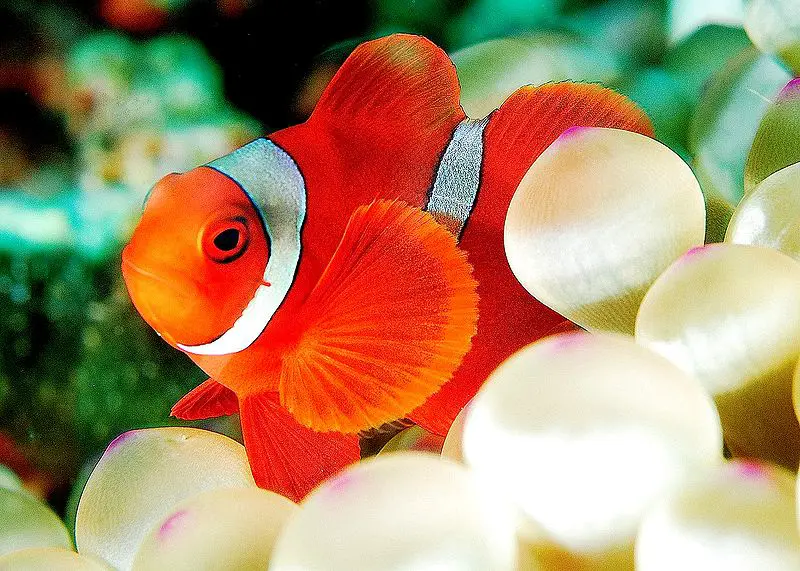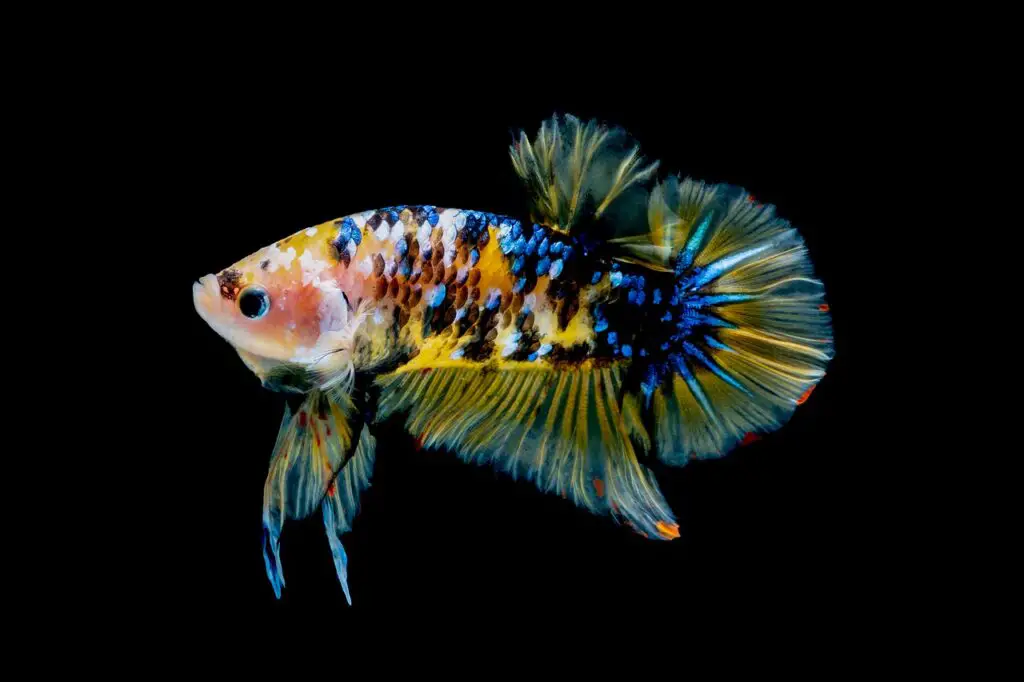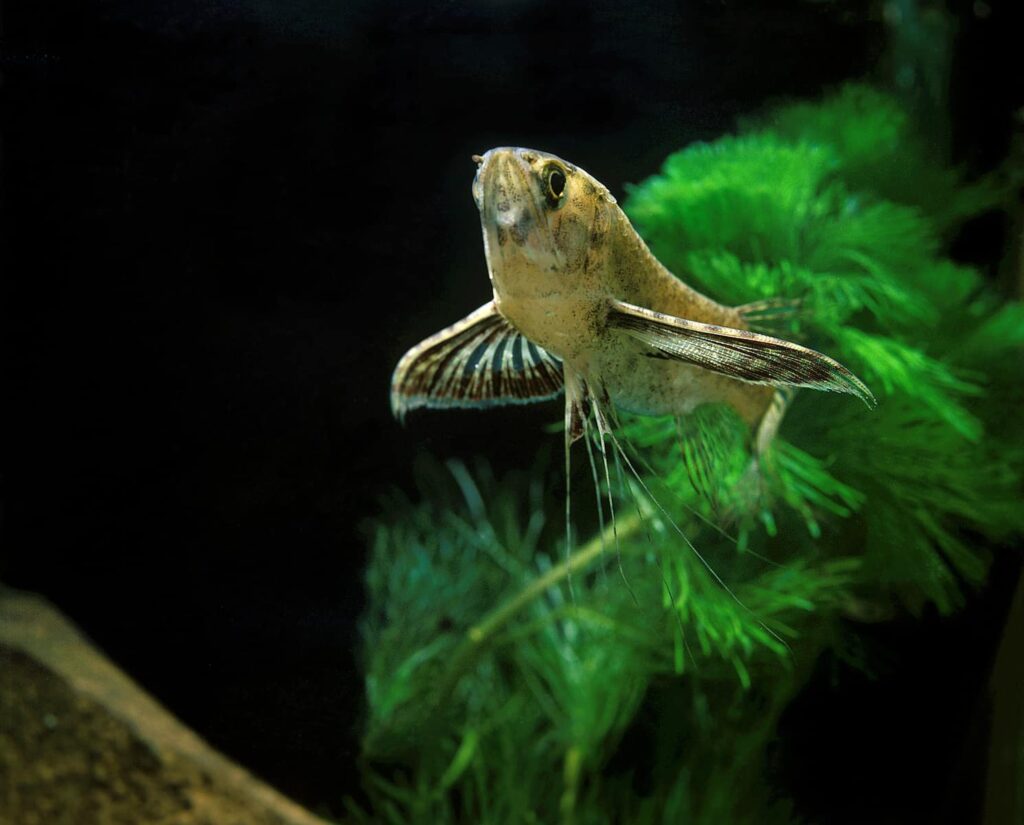Clownfish remain some of the most popular saltwater critters worldwide. We have Disney to thank for that! The maroon clownfish is easily one of the bigger varieties of the species, and it’s so-called – naturally – because of its slightly brownish reddy tinge.
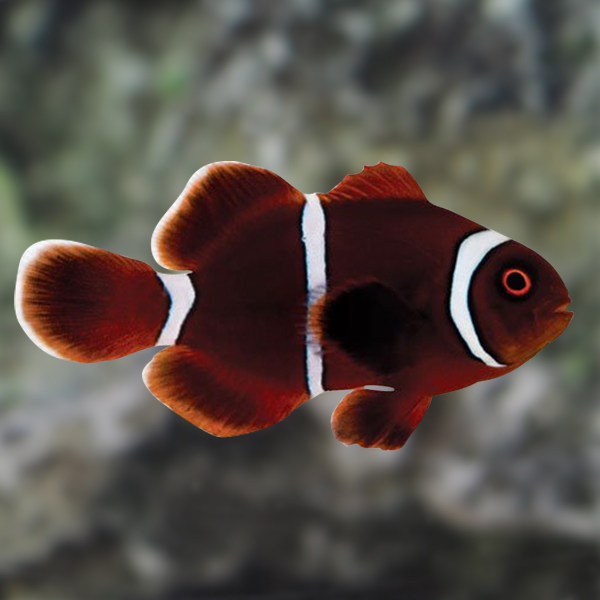
In this guide, we’ll take a look at what you need to know about looking after the maroon clownfish and will consider whether or not it is going to be the best fit for your particular tank or aquarium!
- Fish Lifespan: Around 3 to 7 Years
- Tank Size: At least 55 Gallons
- Water Temperature: Between 72F and 78F
- pH: Between 8.1 and 8.4
- Hardness: Between 8 and 12 dKH
- Compatibility: Compatible with Damselfish, Angelfish
- Fish Size: Up to 6 Inches
How do you take care of maroon clownfish?
The maroon clownfish is easily one of the biggest of the clownfish species in general. It’s got a colourful tinge that’s relatively easy to spot, meaning that if you have ever seen orangey brown clownfish swimming about in an aquarium before, it’s likely that you are looking at this particular species.
The maroon clownfish is an interesting variant on the common clownfish and the percula. That’s because they tend to be some of the more aggressive of the fish. Kept solitary or added last to a tank, it’s perfectly possible to keep a maroon clownfish without there being any issues.
However, if you have owned other clownfish before, you may be surprised at the differences in attitude and propensity for aggression. It seems to take its big size seriously and will therefore bully smaller creatures around given half the chance! Therefore – it’s probably best you don’t give them the pleasure!
That said, maroon clownfish are still really easy to look after. They tend to be very hardy as a result of the great clownfish genes, and what’s more, their water conditions probably won’t give you much of a headache, if at all.
Providing you give a maroon clownfish enough space and you ensure they get a balanced diet, they could live for years and years.
In fact, this is where things get interesting. The maroon clownfish will normally live for at least 3 years if you look after them well. However, they have been known to live for even longer, for 15 years or more! It takes real vigilance and a fantastic fish keeper to get them to this age.
Maroon clownfish will also eat a varied diet. They are omnivores, which means you should look at giving them a mix of meat, herbivore food and fish flakes. They tend to love eating frozen shrimp. However, keep them well away from smaller fish if you want to keep your community peaceful.
Are maroon clownfish aggressive?
Yes – they do get a reputation for being pretty aggressive by clownfish standards. However, this doesn’t make them bad pets, and it certainly doesn’t mean you should avoid them full stop.
There are two ways for you to really handle the potential aggression and territorialism that a maroon clownfish can exhibit. One is to store them in their own tank.
This might make them seem a bit lonely, but as with other clownfish, they can be known to even attack their own kind. Maroon clownfish will generally get on well on their own, though an even better route to consider may be to simply ensure they have lots of space and plenty of hiding room.
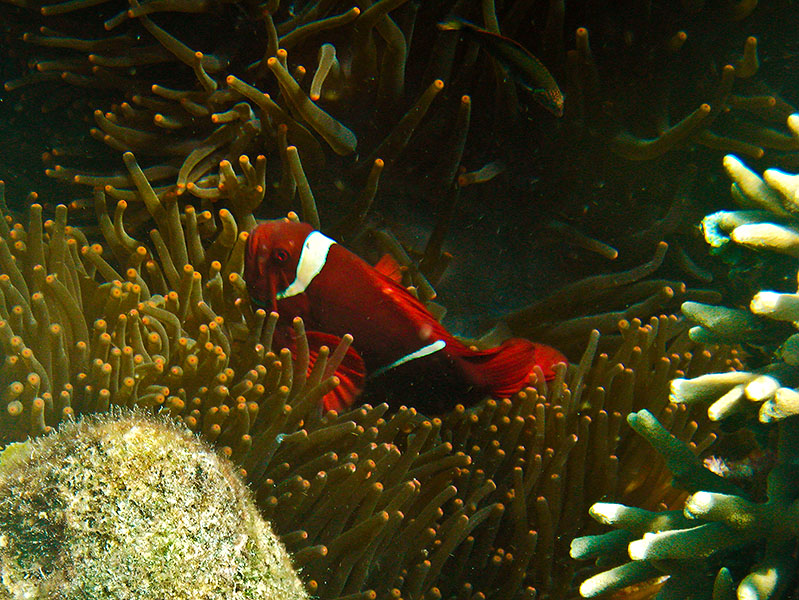
Otherwise, some experts suggest that adding maroon clownfish to your tank last of all might be the way forward. This means that other fish have had the chance to set up their own spaces.
Otherwise, we would generally suggest keeping a maroon clownfish out of the way of anything smaller, and especially other clownfish species. These fish may be easy to look after on paper, but they can be tricky if you are growing a community.
How fast do maroon clownfish grow?
Maroon clownfish tend to grow up pretty quickly. They can grow to a large size and will hatch within two weeks of eggs being laid.
The maroon clownfish will persist extremely well in the right tank conditions, meaning that you can expect it to grow to its full potential pretty sharpish. That’s why it is always worth investing in a larger tank. As with all tropical and saltwater fish, the bigger the tank, the better. This way, you can ensure that all your fish and other critters have plenty of room to swim about, and that there is also hiding room for territorial creatures.
The maroon clownfish is probably one of the biggest of the known clownfish species, meaning it really does pay to make more room for this one – especially if you are already used to smaller clownfish that grow to be about 4 inches long max.
How big do lightning maroon clownfish get?
Maroon clownfish can grow to be 6 inches long! That’s pretty big for a clownfish on the whole, by about 2 inches on the maximum side of things.
This means that you’re likely going to need to invest in a tank that’s on the larger side if you want to give them the space they deserve. Generally, you should think about accounting for at least 2 gallons per 1 inch of fish.
For a maroon clownfish, that’s probably going to mean you looking at a 60 gallon tank for four or five critters. However, it does pay to err on the larger side, as more space means more room to flit about, and more room to hide and build territories.
That said, there’s nothing to say that maroon clownfish won’t reach 6 inches in size. Some may grow to be much shorter. However, our collective advice would be to always prepare for the max size, particularly as these fish tend to grow fairly quickly!
How do you pair a maroon clownfish?
Pairing maroon clownfish is actually a lot easier than pairing up many of the other saltwater creatures you will likely adopt. This is because these clownfish are easy to tell apart by their size.
The female maroon clownfish will be much bigger than the male, which means when it comes to adoption, you should be able to pair off genders for breeding without having to look for anything precise.
It’s also worth noting that, on the whole, the maroon clownfish will breed well in captivity. While some clownfish don’t get on well with each other, pairing up male and female maroon clownfish tends to be an easy job. However, due to the territorial nature of these fish, you can expect them to be very fierce parents – there’s absolutely no chance its tank mates will have the opportunity to seize its eggs, as both Mum and Dad will be watching them like hawks.
It therefore might be a good idea to consider breeding maroon clownfish in their own tank away from other fish species. This is another reason why smaller fish or less tenacious species are likely to feel the brunt of the maroon clownfish’s aggression!
What is the life expectancy of a clown fish?
Different clownfish will live for different periods of time, there is no set period or an average of sorts.

The maroon clownfish is one of the varieties which is likely to live for well over a decade providing you give them the best tank setup and by ensuring that they get plenty of nutritious food. Generally, novice fish keepers should be happy if their maroon clowns live for around 3 years or more – that indicates you’ve done a good job first time around.
However, get these fish past 10 years old and you’re doing a fantastic job! Other clownfish can live for decades, too. They are amazingly hardy, which means that they are unlikely to fall prey to anything nasty that could shorten their lifespans in the tank. This isn’t a golden rule, of course, so make sure to keep vigilant at all times just in case.
What is the most expensive clownfish?
The most expensive clownfish ever sold went for a jaw-dropping $8,900 – and it was indeed a maroon clownfish!
Specifically, it was a PeaceKeeper Maroon, a rare variety, and it was sold successfully via eBay. The sale reportedly went down well – which means that this incredibly rare fish was probably worth the high price tag.
However, don’t panic – maroon clownfish won’t go for anywhere near this much if you stick to the common varieties. Maroon clowns will generally retail for around $25 – $30. This can vary, and other species such as the false percula may even retail for less.
Rarer species naturally cost more. The PeaceKeeper is a strand of the maroon clown species which is extremely uncommon, meaning – yes – you can expect to pay thousands for one specimen!
Fish keeping doesn’t have to be an expensive hobby. Clownfish are some of the most accessible and affordable species around, making them great budget choices and beginner tank owner picks. You can include the maroon clown in that specification!

